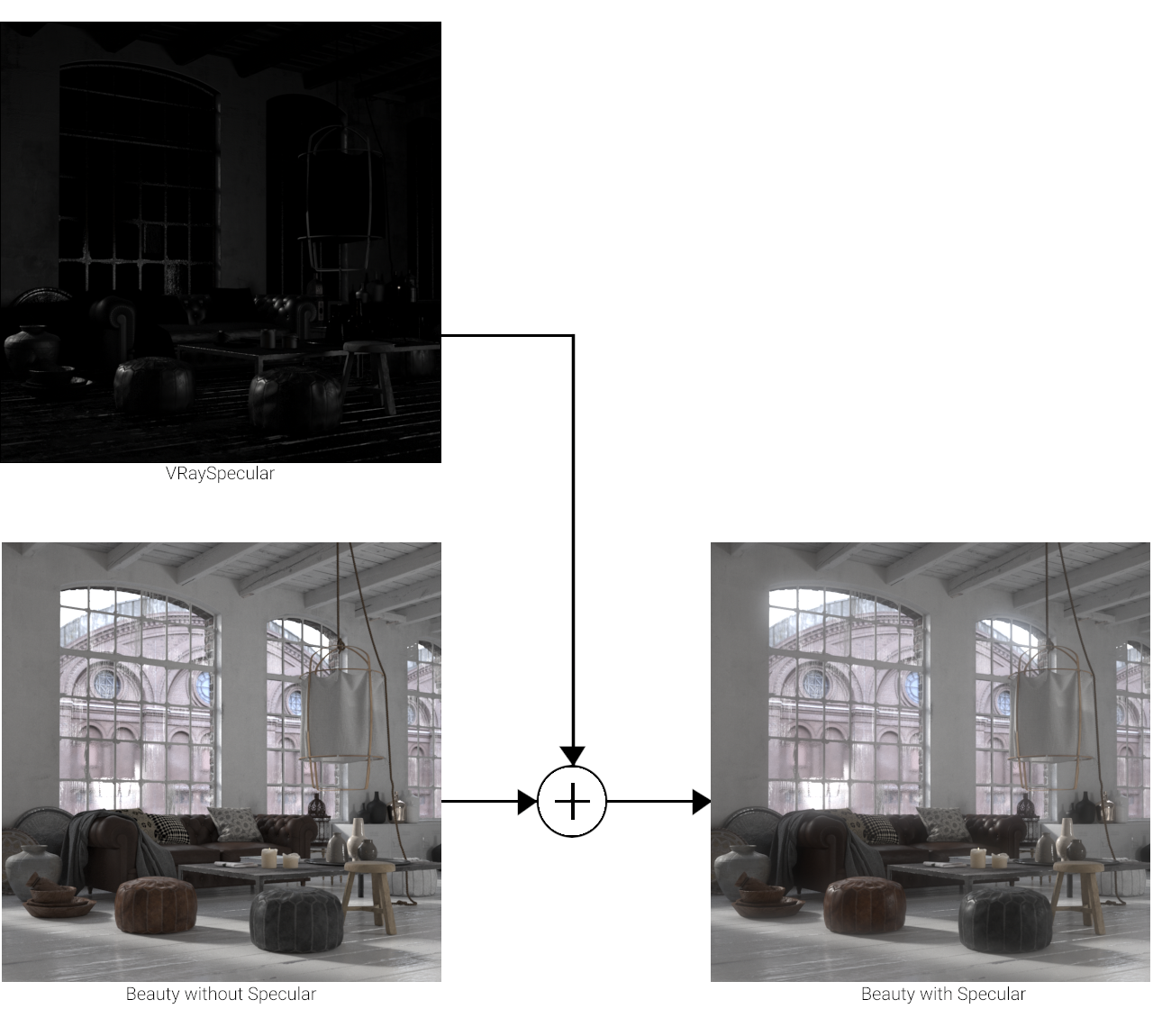VRaySpecular
This page gives information about the Specular Render Element.
Overview
The Specular Render Element is an image that stores specular reflection (basically put, highlight) information calculated from the material's reflection value in the scene. Specular reflection is defined as the reflection of light from a surface in a single particular reflection, as opposed to a diffuse reflection which is reflected at many angles.
The brighter the area, the more highlight reflection the object exhibits in the render. Specular highlights will be colored if the Reflection Color parameter of a material is colored.
Since V-Ray Next Update 1, some of the render elements are rendered differently than before. The Lighting render element now contains all direct diffuse illumination and the GI element contains all indirect diffuse illumination. Similarly, all direct reflections of lights now go to the Specular element and all indirect reflections go to the Reflection element.
Previously this behavior depended on the sampling of the lights and not just on the type of the contribution. Some of the direct contributions that should be in the Lighting and Specular elements were written to the GI and Reflection elements instead. In both cases they compose back to Beauty correctly but the different types of contributions are now split between the elements more consistently.
This change makes the elements more consistent but it's also needed for preventing artifacts in these elements with the adaptive dome light (and possibly in the future with other adaptive lights).
The raw elements are affected only when the corresponding normal and filter elements are available, otherwise they're rendered as before. This is because the raw elements have to be derived internally from the corresponding normal elements in order to work with the consistent elements (f.e. VRayRawGlobalIllumination = VRayGlobalIllumination / DiffuseFilter).
There's an option to enable or disable the new behavior in the Global Switches rollout under the V-Ray tab in the Render Setup window. The consistent elements are automatically enabled when the scene contains an adaptive dome light so they don't have artifacts. They are also enabled by default for new scenes. For V-Ray GPU they are always enabled without an option to disable them.
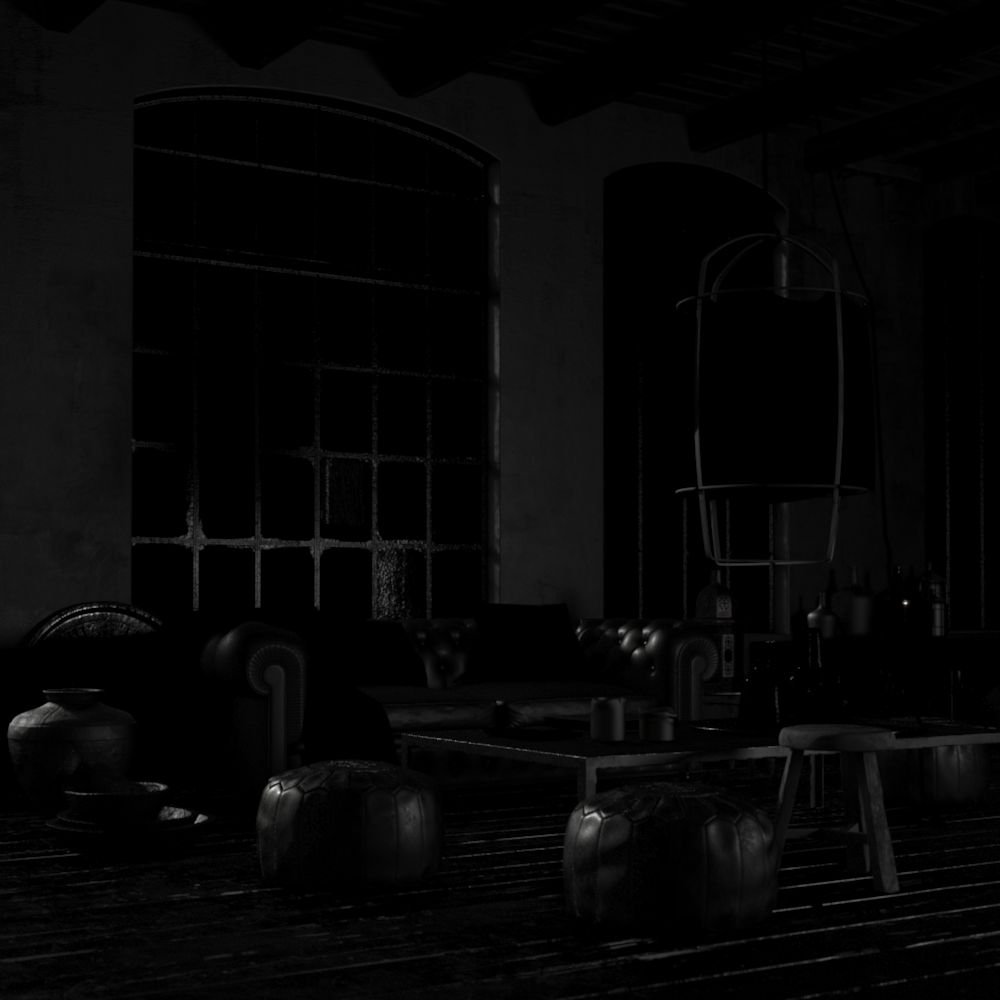
UI Path
||Render Setup window|| > Render Elements tab > Add button > VRaySpecular
Parameters
This render element is enabled through the Render Elements tab of the Render Setup window in 3ds Max and displays its parameters in a rollout at the bottom of the window:

vrayVFB – When enabled, the render element appears in the V-Ray Virtual Frame Buffer.
deep output – Specifies whether to include this render element in deep images.
color mapping – Applies the color mapping options specified in the Color mapping rollout of the V-Ray tab in the Render Setup window to this render element. This option is enabled by default.
multiplier – Sets the overall intensity of the render element, where 1.0 is the standard multiplier.
denoise – Specifies whether to denoise this render element
Evaluating the Specular Render Element
In most scenes, the Specular Render Element will render as mostly black with some gray, or as completely black. Only materials that are set up to reflect, and which do actually reflect a highlight in the rendered scene, will be rendered as having image value in the render element. Shades of gray (or shades of color) in the Specular Render Element rarely reach full value (white in most cases); a white or full value pixel would indicate that the material is completely made up of reflected light at that point, which is rare in realistic scenes. Surfaces with no reflection values set in their material(s) will contain no information in the render element, and will therefore render as black.
Specular light primarily appears on reflective surfaces with a low incidence angle to a bright surface or light source. Lowering the material's gloss value below 1.0 or increasing the IOR can increase this effect.
Common Uses
The Specular Render Element is useful for changing the final image's specular appearance during compositing. Below are a couple of examples of its use.

Specular Render Element
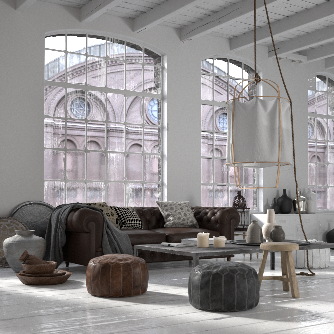
Original Beauty composite
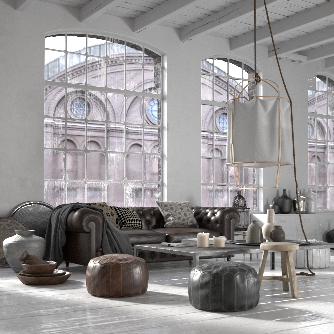
Brightened Specular
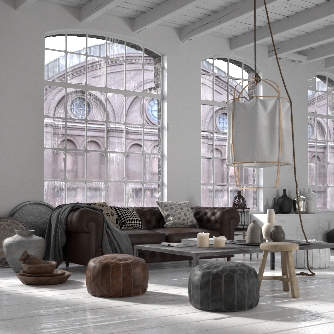
Blurred Specular
Underlying Compositing Formula
The VRaySpecular Render Element is added as part of the Beauty composite to form the final image.
